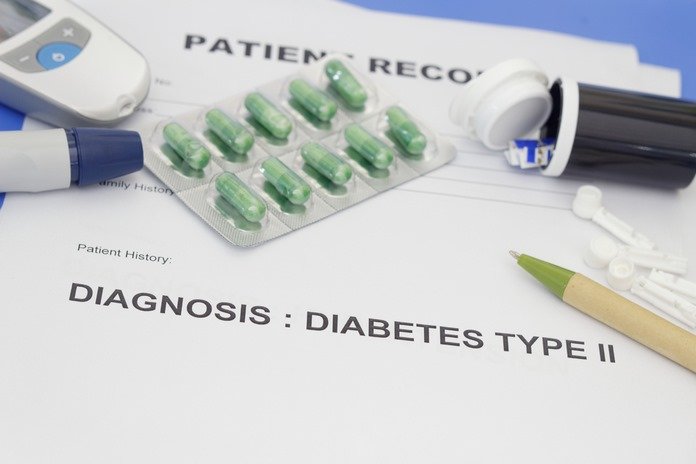How Type 2 Diabetes Is Diagnosed?

Diabetes type 2 is diagnosed normally utilizing the glycated hemoglobin (A1C) test. The blood test shows the average blood glucose level for the two to three months in the past. Results are interpreting in the following:
- Less than 5.7% is the normal value
- 5.7% to 6.4% is diagnosing as prediabetes
- 6.5% or increasing on two different tests shows diabetes
If the A1C test is not present, or if you are having some situations that involves with an A1C test, your healthcare provider might utilize the following test for the diagnosis of type 2 diabetes:
- Fasting blood sugar test:
When you are fasting overnight, then the sample of blood is taken. The results are interpreting in the following:
- Lower than 100 mg/dL (5.6 mmol/L) is moderate level
- 126 mg/dL (7 mmol/L) or increasing on two different test is diagnosing as diabetes type 2
- 100 to 125 mg/dL (5.6 to 6.9 mmol/L) is diagnosing as prediabetes
- Random blood sugar test:
Blood sugar ranges are expressed in millimoles of sugar per liter (mmol/L) or milligrams of sugar per deciliter (mg/dL) of blood. Nevertheless, whenever you eat last time, a level of 200 mg/dL (11.1 mmol/L) or increasing recommends diabetes type 2, significantly if you also have symptoms or signs of diabetes type 2, such as extreme thirst and frequent urination.
- Oral glucose tolerance test
This test is not commonly used in comparison to other tests, except during pregnancy. You will require fasting by the night and then taking a sugary fluid at the doctor’s office. Blood glucose levels are tested periodically for the coming two hours. The results are interpreting in the following:
- Reduce than 140 mg/dL (7.8 mmol/L) is a normal range
- While in Prediabetes diagnosis, 140 to 199 mg/dL (7.8 mmol/L and 11.0 mmol/L)
- 200 mg/dL (11.1 mmol/L) or increasing after two hours shows diabetes
Screening
The American Diabetes Association suggest the routine screening having diagnostic tests for diabetes type 2 in adults of age 45 or elder and in the following groups:
- Women who are having or ever had gestational diabetes
- People who are less than 45 years who are obese or overweight and having each or more risk factors links with type 2 diabetes
- Children who are obese or overweight and who are having family background of diabetes type 2 and other risk factors
- Individual who ever haven been diagnosed having prediabetes
After diagnosis
If you are diagnosed with diabetes type 2, your healthcare provider or doctor might perform other tests to differentiate between type 2 and type 1 diabetes, since the two situations sometimes need different treatments. Your healthcare giver will perform A1C tests repeatedly almost two times per year and when there are any risks in treatment. Target A1C aims differ relying on other factors and age. For many people, the American Diabetes Association suggests an A1C level less than 7%. You will also get a regular diagnosing test to check for complications of comorbid or diabetes type 2 conditions. (15)
Normal range
The test is not commonly used in comparison to other tests, except during pregnancy. You will require fasting by the night and then taking a sugary fluid at the doctor’s office. Blood glucose levels are tested periodically for the coming two hours. The results are interpreting in the following:
- Reduce than 140 mg/dL (7.8 mmol/L) is a normal range
- While in Prediabetes diagnosis, 140 to 199 mg/dL (7.8 mmol/L and 11.0 mmol/L)
- 200 mg/dL (11.1 mmol/L) or increasing after two hours shows diabetes
The American Diabetes Association suggest the routine screening having diagnostic tests for diabetes type 2 in adults of age 45 or elder and in the following groups:
- Women who are having or ever had gestational diabetes
- People who are less than 45 years who are obese or overweight and having each or more risk factors links with type 2 diabetes
- Children who are obese or overweight and who are having family background of diabetes type 2 and other risk factors
- Individual who ever haven been diagnosed having prediabetes
If you are diagnosed with diabetes type 2, your healthcare provider or doctor might perform other tests to differentiate between type 2 and type 1 diabetes, since the two situations sometimes need different treatments. Your healthcare giver will perform A1C test repeatedly almost two times per year and when there are any risks in treatment. Target A1C aims differ relying on other factors and age. For many people, the American Diabetes Association suggests an A1C level less than 7%. (16)
